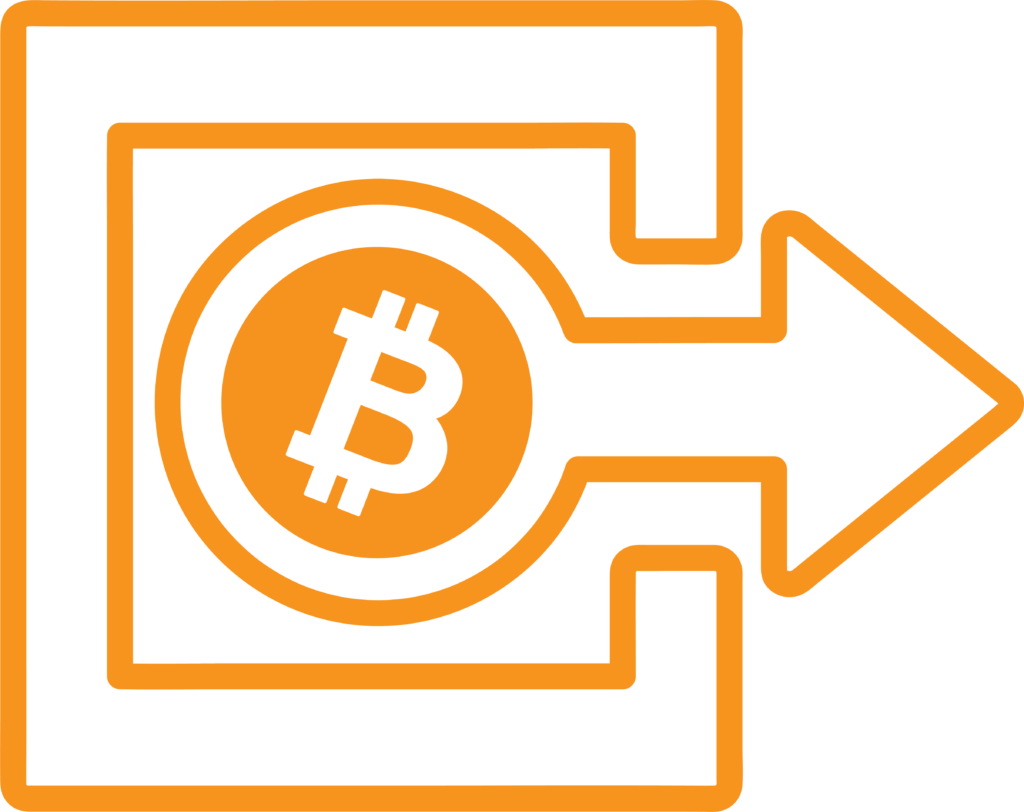
A “wallet, to wallet transfer” usually refers to the process of transferring funds or assets from one wallet to another. In the world of cryptocurrencies and blockchain technology, a wallet can be a software application or a hardware device that allows individuals to store, manage and interact with their assets like Bitcoin, Ethereum and other tokens.
When someone talks about a wallet-to-wallet transfer they are describing the act of sending an amount of cryptocurrency from their wallet to either another person’s wallet or a different address within their wallets. This can be done for reasons such, as making payments sending gifts or engaging in business transactions.
Here’s A Simplified Overview Of The Process
When someone wishes to send cryptocurrency from their wallet to another individual there are steps involved. The process may differ depending on the website or individual wallets a user intends to use.
Initially, the person initiating the transaction utilizes their wallet to arrange the transfer. They must provide the recipient’s wallet address and specify the amount of cryptocurrency they wish to send.
Once these details are provided their wallet generates a record documenting the transfer. This record includes information like the recipient’s wallet address the precise amount being sent and any associated fees. To ensure security the sender’s wallet applies a code known as a digital signature onto this record.
Following this step, the record is transmitted to a computer network for managing such transactions. This network verifies that both parties involved in the transfer are authentic and confirms that the sender possesses cryptocurrency, for sending. If all checks pass successfully the transfer record is added to a ledger called a blockchain—essentially an official repository documenting every cryptocurrency transaction.
The process of including the transfer record, in the blockchain, is known as “mining” (for some types of cryptocurrencies) or “forging” (for others). Once the transfer record becomes a part of the blockchain the recipient of the cryptocurrency can see it in their wallet. They can be confident about receiving the cryptocurrency when they find that the transfer is included in the blockchain. This ensures a transparent process overall.
It’s worth noting that specific steps and terminologies may differ depending on the cryptocurrency and underlying blockchain technology. Furthermore due to decentralization and irreversible transactions, in cryptocurrencies, it’s essential to verify the recipient’s wallet address before initiating any transfers to avoid sending funds to an address. Mistaken transfers often lead to the loss of transferred funds.
Understanding Bitcoin Wallets: The Basics
Before we dive into the world of wallets, to wallet transfers let’s make sure we all have an understanding of wallets. A Bitcoin wallet is a tool that securely stores sends and receives Bitcoin. It consists of two components; a key (similar to an email address) and a private key (similar to a password). The public key acts as the recipient’s address while the private key provides access to the funds in the wallet. Wallets come in forms, such, as software wallets (desktop or mobile applications) hardware wallets ( devices) and paper wallets (printed codes).
Can I Transfer BTC From My Wallet To Another Wallet?
Sure thing! A crucial purpose of a wallet is to allow you to send your holdings from your wallet to another one. This action referred to as a wallet, to wallet transfer makes it easy for funds to move between individuals or entities without relying on banks or other traditional intermediaries.
How Long Does It Take To Transfer BTC From Wallet To Wallet?
The time it takes to transfer Bitcoin from one wallet to another can vary. The speed at which network confirmations occur is the factor that impacts this. Miners, who validate and add transactions to the blockchain are responsible, for confirming Bitcoin transactions. Generally, if you pay transaction fees it may result in confirmations whereas higher fees can speed up the process. As a guide, the more confirmations a transaction receives the more secure and irreversible it becomes. In some cases, you can expect confirmations within minutes for your transactions and after, around 6 confirmations significant security is achieved.
Is It Free To Transfer Bitcoin From One Wallet To Another? Does It Cost To Transfer Bitcoin Between Wallets?
While transferring Bitcoin does incur a cost, it’s essential to understand that this cost is not associated with the act of transferring itself. Rather, it’s a fee paid to miners who process and confirm the transaction. This fee ensures that your transaction is included in the next block of transactions on the blockchain. The fee amount can vary depending on factors such as network congestion and transaction priority.
Key Steps For A Successful Transfer
Step 1: Choose the Right Wallets

When you’re thinking about making a transfer, from one wallet to another it’s important to choose wallets that work well together and prioritize security. Both the sender and recipient wallets should be able to handle transfers. Look for wallet providers that prioritize encryption and multi-factor authentication to keep your private keys safe.
Step 2: Verify the Recipient’s Address
Before you send any money make sure to double-check the accuracy of the Bitcoin address where you’re sending it. Unlike banks, Bitcoin transactions can’t be reversed. If you send funds to the address you could lose your money permanently. To ensure precision copy and paste the address and verify it with the recipient.
Step 3: Set Transaction Fees
Bitcoin transactions involve fees to incentivize miners to process your transaction promptly. While some wallets automatically calculate the fee, others allow you to adjust it. Keep in mind that very low fees might result in slower confirmations, whereas overly high fees may be unnecessary.
Step 4: Initiate the Transfer

After addressing the verification and fee settings, you can proceed to initiate the transfer. This process usually entails specifying the recipient’s Bitcoin address, the amount you intend to transfer, and confirming the transaction. The time it takes for your transaction to be confirmed depends on the fee you’ve set and the current network conditions.
Step 5: Monitor and Verify
Following the transfer initiation, keep a vigilant eye on your wallet’s transaction history. Confirmations by miners indicate the progress of your transfer. Once confirmed, the transaction is irreversible and securely recorded on the blockchain.
Security Measures and Best Practices
It’s crucial to take measures to ensure the safety of your cryptocurrency;
First and foremost it is essential to regularly create backups of your wallet’s private keys or recovery phrases and store them securely. This step becomes vital because in case you lose your device or it gets compromised having these backups will guarantee that you can still access your funds.
Next exercise caution when dealing with scams. Stay vigilant, against phishing attempts and fraudulent activities. Always double-check the authenticity of wallet provider websites and wallet addresses to avoid falling prey to scams.
Keeping yourself updated is another step. Ensure that you keep your wallet software up to date. By doing you can benefit from the security enhancements and new features that may help safeguard your funds.
Before initiating any transfers it is vital to be, in a trusted environment. This precaution prevents access or potential security breaches while moving your funds.
To add a layer of security consider conducting test transactions before sending a larger amount. This way you can verify that everything is functioning smoothly without risking a loss.
By following these steps you can significantly enhance the security of your cryptocurrency wallet. Minimize the risks associated with managing digital assets.
Final Thoughts
In conclusion, transferring cryptocurrency from one wallet to another plays a role in the functionality of currency. It enables individuals to send money across borders and enhances accessibility to services. By comprehending the mechanics of this process and following the steps we discussed you can feel confident when sending Bitcoin. As you enter the complex world of finance it is vital to prioritize the safety of your funds by adopting security practices. While Bitcoin holds potential utilizing it responsibly remains paramount. Here’s to secure transfers, between wallets!
However, remember that the cryptocurrency world evolves rapidly. To navigate this area successfully staying informed and continuously learning are essential. These endeavors will empower you with an understanding of emerging trends and enable you to maximize the benefits offered by digital currency and technology.